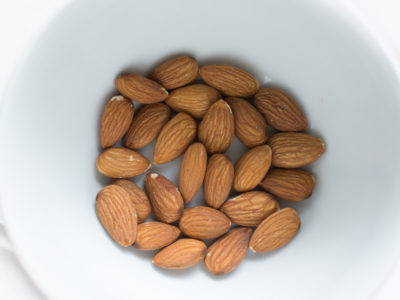When vitamins were first being discovered, they were assigned letters in alphabetical order. Biotin was originally coined vitamin H, but was later categorized as a B-complex vitamin and was assigned yet another name, vitamin B7.
Like the other B vitamins, biotin is essential for metabolism in the biochemical sense – it is a cofactor for the creation of compounds that help each cell to function. Interestingly, biotin is used both to break down the major sources of fuel (carbohydrates, amino acids, and fatty acids) and also to generate new glucose for fuel when we are in a fasting state. These biochemical pathways occur in every cell of our body, making biotin another B vitamin that is absolutely required for life. Additionally, biotin is used as part of the regulation of chromatin structure (the way that DNA is condensed and organization), which impacts genetic expression.
Since we need to get biotin from our food, there is chance of deficiency. The signs and symptoms of biotin deficiency include hair loss, scaly red rash, and severe neurological symptoms (depression, lethargy, hallucinations, numbness & tingling, and seizures). The most common causes of deficiency are rare metabolic disorders, though, so this is more of an FYI than a critical fact. Interestingly, researchers have shown that at least one third of pregnant women become subclinically deficient in biotin, perhaps because of the metabolic and material demand to generate so many new cells (for the growing fetus). That being said, there is little science describing exactly how much biotin we need in our diets, so there is no RDA – only an adequate intake (AI) amount indicated per day, which for adults is 30 micrograms/day.
Scientists have also studied why maintaining biotin sufficiency is important for health. One essential reason is that it prevents congenital anomalies (birth defects). As I mentioned above, there’s an increased need for biotin as the fetus grows, so not having enough could cause issues with cell replication – this leads to birth defects. High doses of biotin have also been used to help with neurological diseases like multiple sclerosis as well as metabolic diseases like diabetes. Perhaps you’ve already heard of other uses of biotin: brittle fingernails and hair loss. Based on its role in the cell cycle and DNA expression, I also have to wonder if biotin sufficiency impacts our epigenetics (changes in genetic expression from person to person throughout their lifetime).
Humans need exogenous (i.e., dietary) sources of biotin, as we can’t synthesize it on our own. The foods highest in biotin include egg yolks (13-25 micrograms/serving) and liver (27-35 micrograms/serving). Other good sources include nuts such as almonds and walnuts, root vegetables, and tomatoes. We can absorb free-form biotin right through the cells in our intestines, or it can come along attached to proteins.
It’s pretty easy to get sufficient biotin from a standard Paleo diet (and even easier from the nutrient-density focused implementation of Paleo that I recommend). Have you noticed that Paleo diet improved your fingernails or hair? Maybe it was the uptick in dietary biotin!
Citations
Staggs CG, Sealey WM, McCabe BJ, Teague AM, Mock DM. Determination of the biotin content of select foods using accurate and sensitive HPLC/avidin binding. J Food Compost Anal. 2004;17(6):767-776.
Food and Nutrition Board, Institute of Medicine. Biotin. Dietary Reference Intakes: Thiamin, Riboflavin, Niacin, Vitamin B6, Vitamin B12, Pantothenic Acid, Biotin, and Choline. Washington, D.C.: National Academy Press; 1998:374-389.
Mock DM. Biotin. Handbook of vitamins. 4th ed. Boca Raton, FL: CRC Press; 2007:361-383.
Zempleni J, Teixeira DC, Kuroishi T, Cordonier EL, Baier S. Biotin requirements for DNA damage prevention. Mutat Res. 2012;733(1-2):58-60


 Vitamin B6 (Pyridoxine)
Vitamin B6 (Pyridoxine)